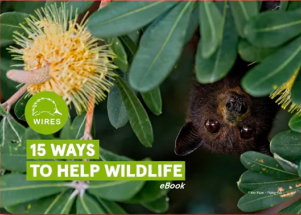Australian Bat
Lyssavirus
- Home
- What We Do
- Wildlife Information
- Disease Information
- Australian Bat Lyssavirus
What you need to know
What is ABLV?
Australian Bat Lyssavirus (ABLV) is a virus similar to rabies, which can be transmitted from bats to humans. It can be carried by flying-foxes (also known as fruit bats) and microbats.
Risk and Safety Precautions
Although fewer than 1% of flying-foxes and bats are believed to carry the virus, anyone working with these animals is required to be vaccinated as a safety precaution, in accordance with the NSW Health Service guidelines.
WIRES receives thousands of calls each year for the rescue of flying-foxes and microbats. Of all the animals in care, typically only one may have the virus. Despite this, the virus can be fatal to humans, which is why only vaccinated individuals should handle these animals.
Transmission and Symptoms
ABLV is transmitted through direct contact with an infected animal’s saliva. Infection may occur if you are bitten, scratched, or exposed to saliva through the eyes, nose, mouth, or an open wound. However, the virus is not spread through urine or droppings of the bats.
Since the virus was identified in 1996, only three cases of human infection have been reported, all in Queensland.
What to Do if You’re Exposed
If you are not vaccinated and are bitten or scratched by a bat, immediately wash the wound with soap and water for 5 minutes and seek medical attention. If there’s a risk of infection, you will typically be given a series of vaccine injections.
Do NOT Handle Bats unless you are vaccinated
If you find a bat that is sick, injured, or orphaned, or if you encounter one away from its camp during the day, do not touch it unless you are vaccinated. Contact WIRES at 1300 094 737 for rescue assistance.
WIRES will send a trained, vaccinated volunteer to safely assist you with the bat.
For more information on Flying Foxes, learn more here.
15 Ways to Help Wildlife
Sign up to receive our monthly eNewsletter with wildlife rescue stories and updates on our work rescuing, rehabilitating, and releasing native wildlife.
